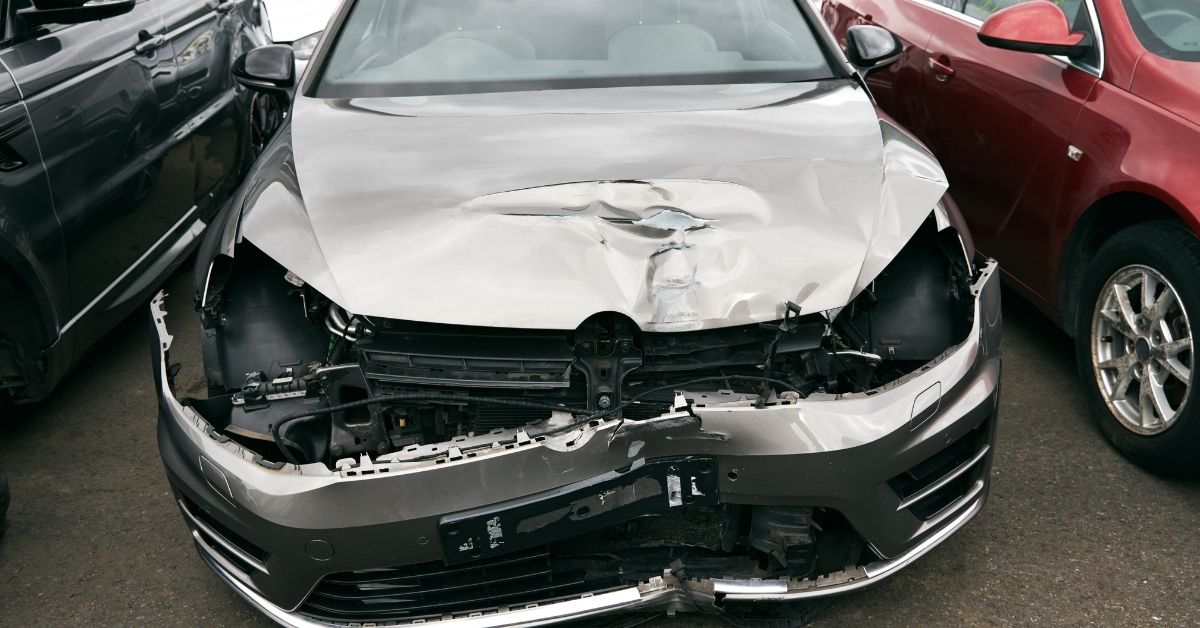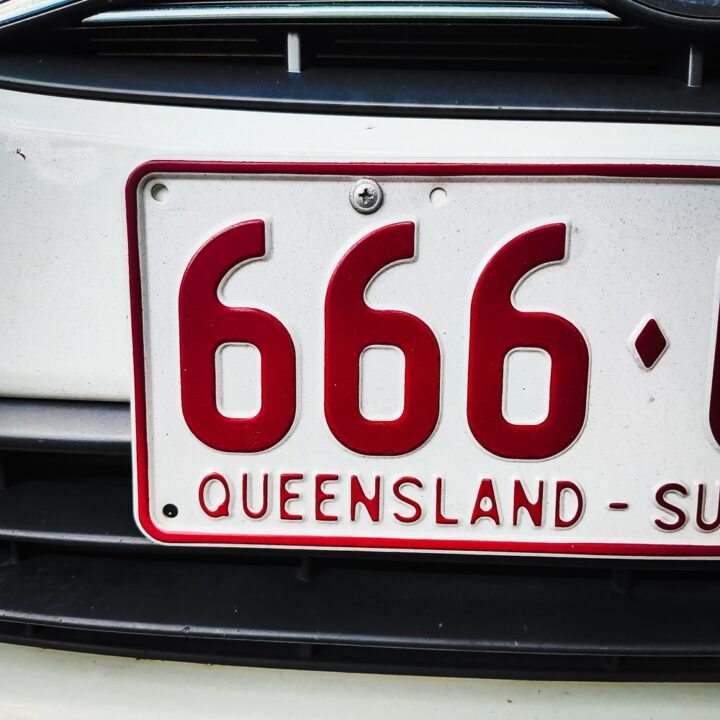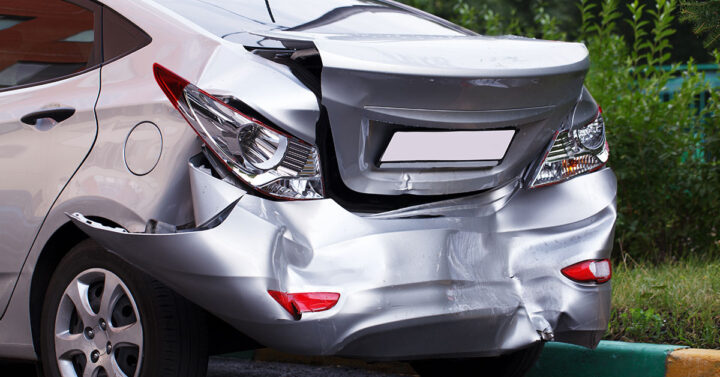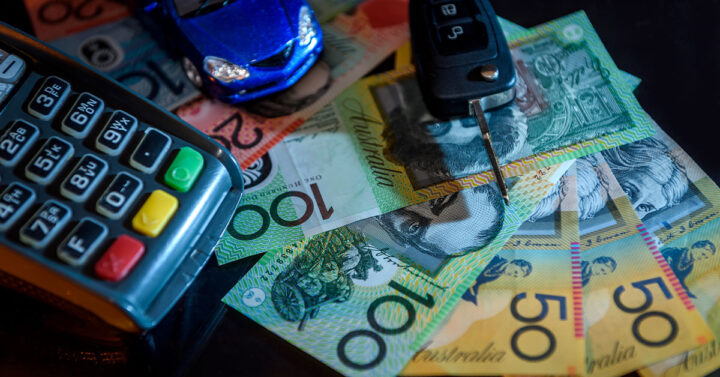Do You Get Rego Back If Your Car Is Written Off?

If your car has been written off, you’ve probably got enough on your plate already. The last thing you need is a confusing mess of paperwork.
One common question many Aussies ask at this point is:
“Can I get a refund on my rego?” The simple answer is yes, but with a few conditions, and they vary depending on where you live.
This guide will break it all down so you know exactly what to do, without getting buried in red tape.
Understanding What It Means When a Car Is Written Off
First things first – what does it mean when your car is “written off”? It’s not just a dramatic phrase used by mechanics or insurers.
It has specific meanings that can affect how you go about claiming your rego refund.


What Is a Written-Off Vehicle?
A vehicle is considered written off when it’s been damaged to the point that it’s either unsafe to repair, uneconomical to repair, or both.
The insurance company usually makes this call after an accident or major incident. They look at the cost of repairs versus the car’s value and decide it’s not worth fixing.
Types of Write-Offs: Repairable vs Statutory
There are two main types: repairable write-offs and statutory write-offs. A repairable write-off means the car can be fixed, but the cost is higher than the vehicle’s value.
You might see these cars at auctions. A statutory write-off, on the other hand, means the car is so badly damaged it can never legally be registered again.
These are only good for scrap or parts.
Who Decides If a Car Is Written Off?
The call is usually made by the insurer after getting an assessment from a qualified mechanic or assessor.
If you’re uninsured, a government body or a licensed assessor might make that decision, especially if the vehicle is unsafe for the road.
Can You Get a Rego Refund for a Written-Off Car?
Now, to the juicy bit.
Yes, you can get a refund on the unused portion of your registration – often referred to as “rego” – if your car is written off.
But how much you get and how you get it depends on your state or territory and a few other factors.
What Is Rego and What Does It Cover?
In Australia, “rego” refers to your vehicle registration.
It includes the cost of registering the vehicle with your state or territory’s transport authority and usually includes Compulsory Third Party (CTP) insurance.
Some states separate the fees, but the idea is the same – you pay to legally have your car on the road.
Is a Refund Possible After a Car Is Written Off?
Absolutely. If your vehicle can no longer be used, you’re entitled to claim back the remaining unused registration period.
For example, if your car is written off six months into a 12-month registration, you may be eligible for a six-month refund.
This also usually applies to the CTP portion, but that might involve a separate claim with your insurer.


How Rego Refunds Work in Australia
Each state has its own process.
You’ll typically need to cancel the registration, surrender the number plates (unless told otherwise), and provide evidence like an insurance payout letter or a statutory declaration.
Once you’ve ticked all the boxes, the transport authority processes your refund based on the remaining time left on the rego.
Eligibility Criteria for a Rego Refund
Not every written-off car is automatically eligible for a refund. You’ll need to meet a few conditions, which vary slightly between jurisdictions.
State-by-State Eligibility Overview
Some states offer automatic partial refunds, while others require a formal application.
In most cases, the vehicle must have been registered at the time it was written off, and the registration must still be valid when you apply.
If the rego expired before the write-off occurred, you’re out of luck.
Do You Need Insurance to Be Eligible?
Technically, no. You can still cancel your rego and get a refund even if you weren’t insured.
However, insurers often handle the admin as part of the claim process, which can make things easier.
Either way, you’ll usually need proof that the vehicle was written off, like a payout summary or an official assessment report.
What Happens If You Sell the Car to a Wrecker?
If you sell the vehicle to a wrecker, you can still apply for a refund. In fact, the wrecker may even give you the documentation you need for the cancellation.
Just don’t forget to keep copies of everything – ownership transfers, payment receipts, and confirmation that the car won’t return to the road.


State-Specific Rego Refund Processes
Each Australian state and territory runs its transport department with slightly different processes. Here’s what you need to know in each region.
Queensland (QLD)
Queenslanders must surrender their number plates at a transport centre, complete a cancellation of registration form, and provide either an insurance report or a statutory declaration.
Any eligible refund will be processed by the Department of Transport and Main Roads.
New South Wales (NSW)
In NSW, you need to visit a Service NSW centre to cancel your registration. Bring your number plates, driver’s licence, and a written-off confirmation letter.
You may also get a refund on your CTP by contacting your insurer. Refunds are issued via cheque or direct deposit.
Victoria (VIC)
Victorians can cancel registration online through myVicRoads. You don’t need to return your plates – they just need to be destroyed.
You’ll get a refund for the remaining rego minus a cancellation fee. Make sure you provide proof that your vehicle has been written off, such as an insurance letter or wrecker’s invoice.
South Australia (SA)
SA allows you to cancel registration online or in person. If the car is written off, you’ll need documentation such as an insurer’s letter or wrecker receipt.
There’s an admin fee, and the rest of your rego will be refunded via your nominated bank account.
Western Australia (WA)
In WA, written-off vehicles must be deregistered through the Department of Transport. You’ll need to hand in the plates and submit proof of the write-off.
Refunds cover the remaining full months of registration, and there’s a small processing fee deducted.
Tasmania (TAS)
You can cancel registration in TAS by filling out a form and handing in the plates. Refunds are issued for all unused months of registration.
A certificate from your insurer or a wrecker’s receipt will be needed.
Australian Capital Territory (ACT)
In the ACT, registration can be cancelled online or in person. A refund is calculated based on the complete months remaining. Return your number plates and show documentation proving the car was written off.


Northern Territory (NT)
NT Transport requires you to cancel rego in person. Bring your ID, proof of the write-off, and the number plates. Refunds are given for whole months left on the rego, minus a cancellation fee.
Steps to Cancel Vehicle Registration
Cancelling your rego isn’t just a formality – it’s essential for your refund. Follow these steps to make sure everything’s squared away.
What Documents Do You Need?
Make sure to gather your driver’s licence, registration certificate (if available), proof that the vehicle was written off (insurance payout letter, assessment report, or wrecker receipt), and a completed rego cancellation form.
Some states also want a statutory declaration if no other proof is available.
How to Submit Your Cancellation Request
You can usually cancel online, by post, or in person, depending on your state. Online is often faster, but some areas still require a visit to a service centre.
Don’t forget to double-check the state’s official website for the latest steps.
What Happens to the Number Plates?
This is where states differ. Some require you to return the plates, others ask you to destroy them. Either way, you’ll need to notify the authority of what’s happened.
If your plates are personalised or custom, you may be able to transfer them to a new vehicle.
How Is the Refund Calculated?
Refunds aren’t always dollar-for-dollar. There are a few things that can reduce your payout.
Rego Fees vs CTP Insurance Refunds
The rego fee goes to the government. The CTP portion usually comes from a private insurer. That means you’ll often have to request these refunds separately.
For example, your rego refund may come from your state transport office, while the CTP refund comes directly from your insurer.


Deductible Administration Charges
Some states deduct an admin fee before issuing the refund. It’s usually around $20–$30. While not massive, it’s still something to factor in when working out how much you’ll get back.
What Happens to Other Road-Related Charges?
If your rego includes extras like heavy vehicle charges or toll passes, those aren’t usually refunded.
In most cases, only the base registration and CTP are eligible for partial reimbursement.
Timeframes and Processing
Timing is everything. Don’t delay, or you might miss out on the refund altogether.
When to Apply for a Refund
Apply as soon as your vehicle is declared a write-off. In some states, you must apply within 14 or 28 days to be eligible. The earlier you do it, the better your chances of getting a full refund.
How Long Does the Refund Take?
Processing times vary. Some states can process the refund in under two weeks. Others may take up to 30 days. If you haven’t heard back after that, give them a call to check the status.
How You’ll Receive the Money
Refunds are usually sent via direct deposit into your nominated bank account. Some may issue a cheque.
It depends on how you applied and what details you provided at the time of cancellation.
Special Considerations and Exceptions
Not every situation is black and white. Here are a few edge cases you should know about.
What If the Car Is Unregistered at the Time?
If your rego has already expired when your car is written off, there’s nothing to refund. You can’t backdate a refund claim. Make sure you apply while the registration is still active.


What If the Car Was Financed or Under Lease?
If the car was under finance, the insurer usually pays the finance company first.
But you can still apply for your rego refund separately, as the finance doesn’t affect the registration in most cases.
Always check your contract and speak to your lender if you’re unsure.
What If You’ve Already Bought a Replacement Car?
Getting a new car doesn’t change your eligibility for a refund on the old one. However, some states let you transfer the remaining rego credit to the new vehicle.
Ask your local authority if this is possible – it could save you some paperwork.
Tips for a Smooth Rego Refund Process
Let’s face it – government forms can be a pain. But these tips can make the whole thing a lot smoother.
Double-Check Your Documentation
Make sure names, dates, and vehicle details match on all documents. If something doesn’t line up, it can delay your refund or get your application knocked back.
Notify Your CTP Insurer Promptly
Don’t assume your insurer will automatically process your CTP refund. Give them a ring and request it separately if needed.
Some states require you to send a copy of the cancelled registration certificate before releasing funds.


Use State Government Portals for Faster Service
Where available, use online portals like myVicRoads or Service NSW. They’re often quicker and let you track your refund status.
Plus, you won’t have to stand in a queue behind someone asking about fishing licences.
Conclusion: Maximising Your Rego Refund After a Write-Off
No one enjoys dealing with paperwork after a car accident. But if your car’s been written off, claiming back your unused rego can put a bit of cash back in your pocket.
Just make sure you follow your state’s rules, get your documents in order, and act quickly. A little effort now can save you money and headaches down the road.
Summary of Key Takeaways
- You can usually get a refund on unused rego if your car is written off.
- Processes and eligibility differ across Australian states and territories.
- Always provide accurate documents and apply within the required timeframe.
- CTP refunds are usually separate – don’t forget to contact your insurer.
- Online applications are often faster and easier.
Where to Get Further Help or Clarification
If you’re unsure about your eligibility or how to start the refund process, contact your local transport authority directly. Their websites have the latest forms and contact details.
Or, if you’ve sold your written-off vehicle to a company like Buying Any Cars, ask them – they may be able to point you in the right direction.




